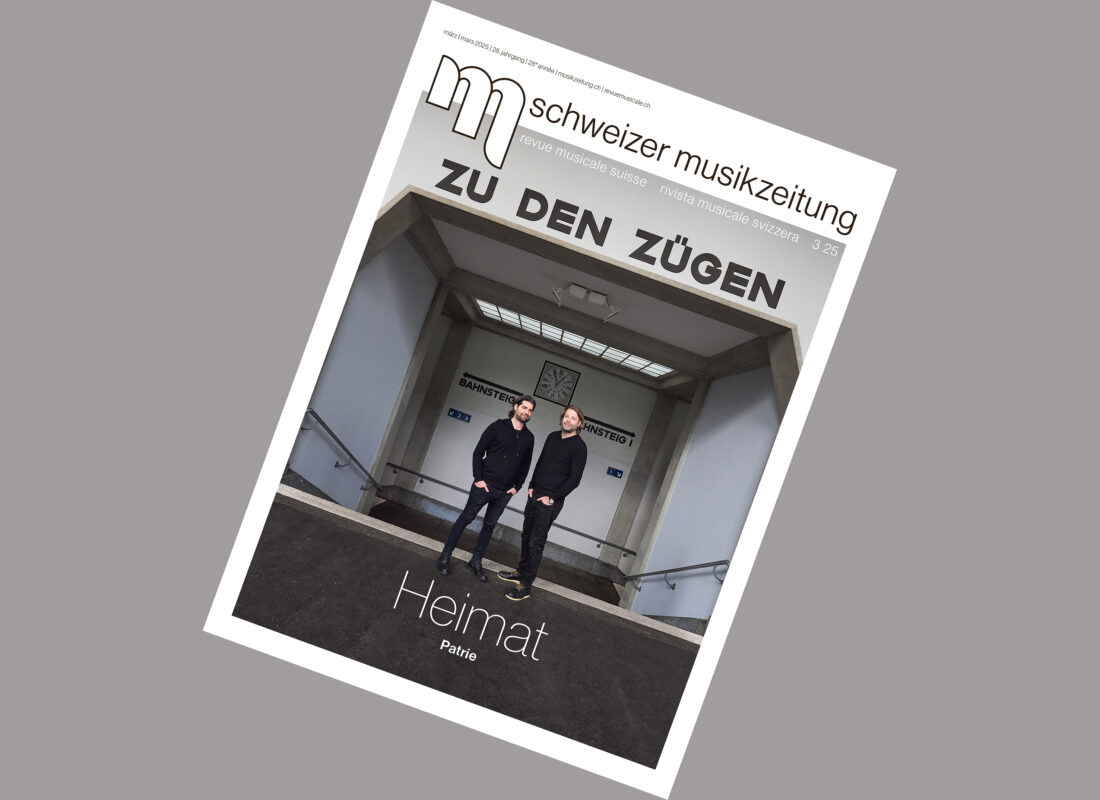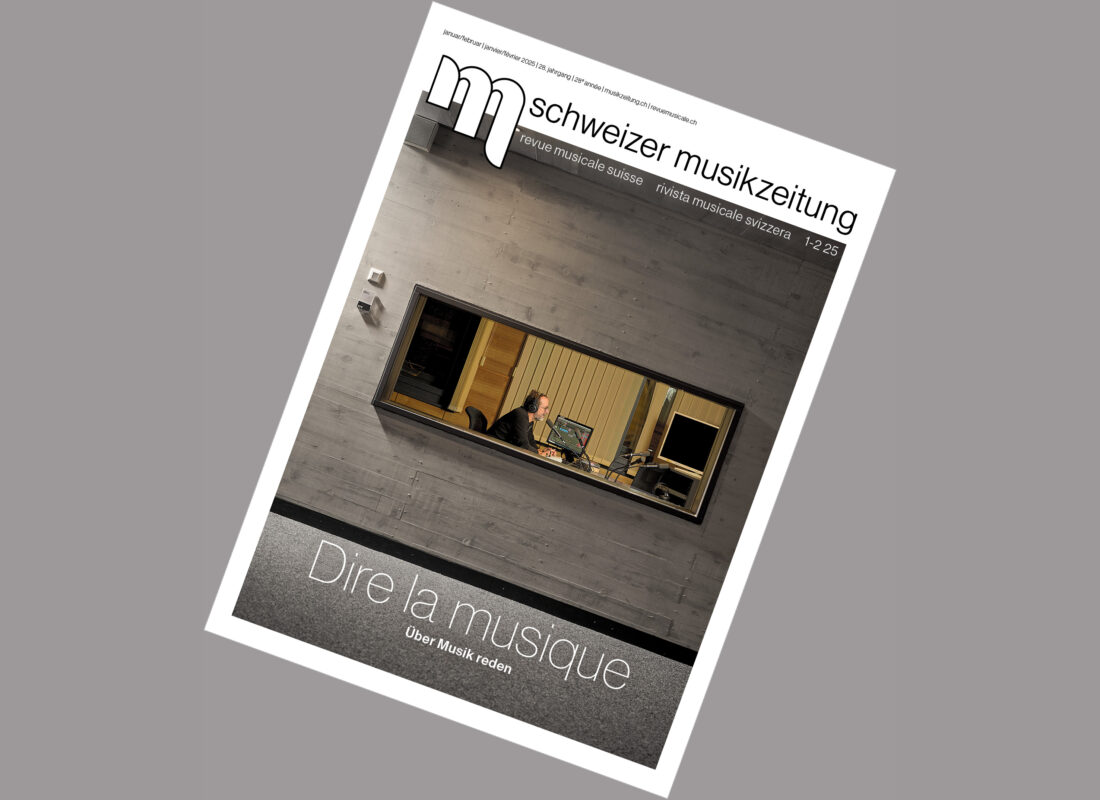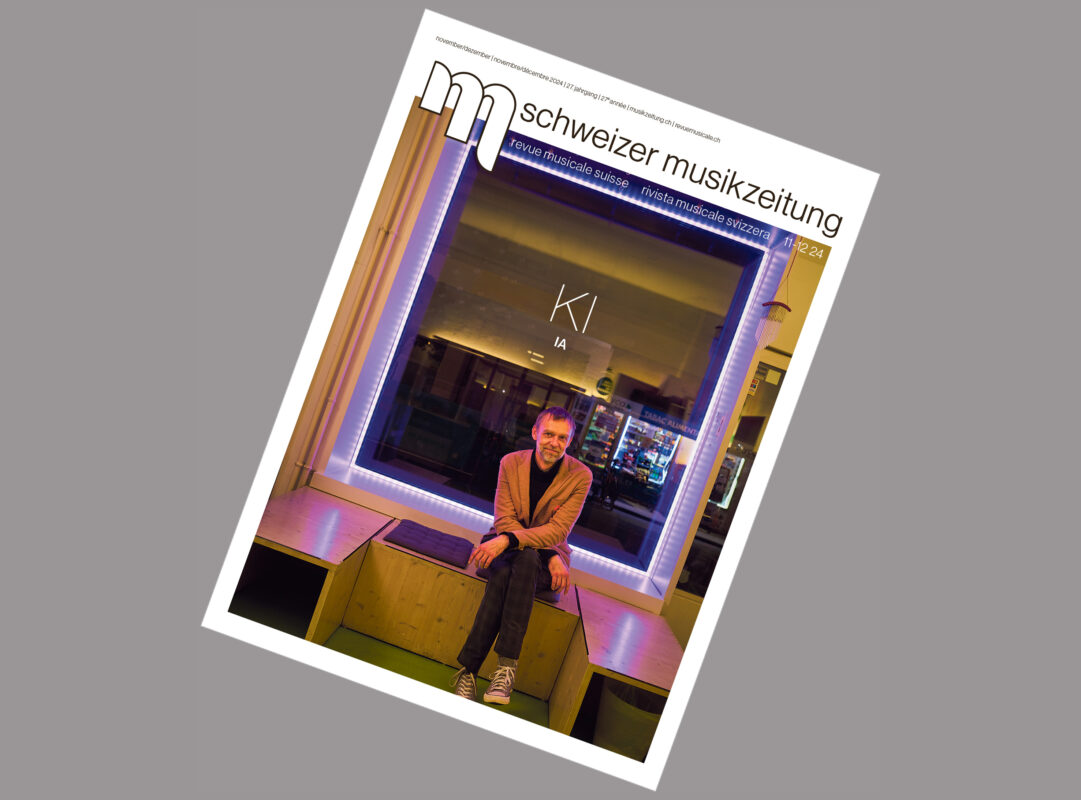On the onward journey
Heavyweights of the musical canon challenge us to confront and reshape them. They keep us on the move. Thought fragments about looped canons, a jazzy winter journey, Mozart on the road and a noble savage at Waldeck Castle.

Heavyweights of the musical canon challenge us to confront and reshape them. They keep us on the move. Thought fragments about looped canons, a jazzy winter journey, Mozart on the road and a noble savage at Waldeck Castle.
Music is progression in time. This not only applies to the course of a piece. Musical content also moves on. The familiar, be it an entire work or individual elements, reappears in a later epoch and is adapted to suit the musical "landscape". A process that runs through the entire history of music: Looking back and reshaping creates a network of relationships across the ages. Here are some connecting lines from current examples that have to do with travel.
Foot march with variations
In 1705, the twenty-year-old Johann Sebastian Bach traveled 400 kilometers from Arnstadt to Lübeck to hear the famous Dieterich Buxtehude play the organ. A long way for a traveler on foot. Long Walk is what pianist Francesco Tristano calls his concert program more than three hundred years later, in which he combines works by Buxtehude and Bach with his own creations.
Bach extended his stay to a quarter of a year on his own authority and when he finally returned home, he had impressions in his head that influenced his work and the history of European music. The 32-year-old Luxembourger must have traveled to the concert in Bern's Kleezentrum by plane or otherwise under the influence of others. Among other things, he plays Buxtehude's Aria La Capricciosa BUXWV 250 on the folk song Cabbage and turnipswhich may have been Bach's only contribution to the variation genre, the Goldberg Variationsand Bach's Partita No. 5 in G major BWV 829 - on the modern concert grand piano. He thinks it's a shame that classical music is treated as a kind of role play of the past, says Tristano, and doesn't care about the rules of historical performance practice. And then he continues the long march from history, striding into the present with Bach. Tristano also plays in clubs, sometimes working on the grand piano like a DJ. Now he is sending Bach's 14 Canons over the first eight fundamental notes the Aria of the Goldberg Variations BWV 1087 on its journey. He plays it with piano and electronics, leaves it to the room, lets it return from loudspeakers at different distances, surrounds it with noises, expects the condensed sounds back. A dialog across the ages. And the extraordinarily mixed audience now really gets going.
Long Walk, Francesco Tristano plays Buxtehude, Bach and Tristano, concert from May 5, 2013 at the Zentrum Paul Klee in Bern; Deutsche Grammophon 0289 476 5003 4 CD DDD GH
Stumbling in the snow
While Bach traveled back and forth, the wanderer in Schubert's Winter journey in a circle. Although he keeps moving like a fugitive, he remains hopelessly trapped. It is based on the cycle of poems of the same name by Wilhelm Müller, which was published in the collection Gedichte aus den hinterlassenen Papieren eines reisenden Waldhornisten. This heavyweight of the song repertoire has also recently changed horses once again. Mathias Rüegg, the founder and long-time director of the Vienna Art Orchestra, has arranged half of the songs for jazz quintet; and the young singer Lia Pale interprets them with astonishing impartiality. Pale has translated Müller's texts into English, often abridged. It sounds light and yet melancholy, supported by a very clear, heavily thinned-out instrumental sound. Do you really want to give in to the first reflex, which demands a weightier voice for these lyrics? On a second listen, it makes sense to read these songs, detached from the usual instrumentation, as the painful self-exploration of a person in any situation in life, as stumbling steps after the failure of a love, a path taken so far. Pale has written the last song with the eponymous conclusion Gone too far overwritten. Does it take back the boldness of the treatment after all? Let us rather read it as a statement that there is no return to old patterns from such a journey of the soul. For this kind of continuation of lyrical tradition does not seem to me to go too far.
Lia Pale: gone too far. Composer: Franz Schubert aka berT; arranger: Mathias Rüegg aka shoE. Lia Pale, vocals, piano; Ingrid Oberkanins, percussion; Hans Strasser, bass; Harry Sokal, reeds; shoE, piano. Universal Music 0602537296613
Barouche to success
The "Wunderkind Journey" is more about (re)commemorating and exploring than creating new works. On June 7, 1763, the Mozart family set off with seven-year-old Amadé to convince princely courts in Germany and Austria of the little boy's talent. Now, 250 years later, this journey is being retraced under the auspices of the German Mozart Society - right up to the heavily laden calash that set off from Salzburg on June 7, 2013. For the press photo, even actors climbed into the vehicle and empathized with the excitement of the travellers. In collaboration with 44 local organizers, concerts, lectures, guided tours and theater performances will take place in 18 cities along the route on the historically correct dates. Participants include Concerto Köln, l'arte del mondo, the Pleyel Quartet, Michael Quast, Reinhard Goebel and the Bayerische Kammerphilharmonie as well as the Ludwigsburger Schlossfestspiele. An extensive catalog documents the journey.
250 years of the Wunderkind journey - With the Mozarts through 18 German cities.
Widely traveled novel hero on the opera stage
As a rule, an opera has already undergone a journey of adaptation before music comes into play: the plot is based on a literary model or a folk tale and has been reworked into a libretto. This also applies to André-Ernest-Modeste Grétry's Le Huronfirst performed in Paris in 1768. It is unusual that this journey only leads to Switzerland almost 250 years later. The material is based on the novel L'ingénu by Voltaire, which incorporates the idea of the noble savage. An Indian from the Huron tribe is brought from Canada, a former French colony, to France, where he finds his distant relatives again and - after so much discomfort - also finds love. In contrast to Voltaire, the story has a happy ending on the opera stage; Grétry has reworked the material into an opéra comique. It is now at home at Waldeck Castle from August 9 to 17.
André-Ernest-Modeste Grétry: Le Huron. cantus firmus consort on period instruments; musical direction Andreas Reize; stage direction Georg Rootering. Swiss premiere.









